Will you be surprised if I tell you that artificial intelligence (AI) is making its way into our pharmacovigilance (PV) systems? I hope you are not, but maybe some of you are. So, let’s discuss a little about AI in PV. In 2022, a Council for International Organizations of Medical Sciences (CIOMS) working group (WP) has been formed to reply to this very topic: artificial intelligence in pharmacovigilance. The working group released a draft guidance in May 2025, and my personal take home message is that human oversight is essential¹.
Before we dive into the topic, I wanted to let you know that UBC is preparing a series of AI-related blogs to shine light onto UBC’s masterminds who are driving AI innovation and what they are working on within our PV department.
Why Human Oversight Still Matters
This being said, what does it mean “human oversight”? Let’s dig into the topic and discuss the few layers of the matter.
First it is clear that we do not want to let the AI perform everything alone and remove humans from the loop. The main supporting factors are that we are dealing with people’s safety, and we need to keep expert humans in or on the loop of AI systems. Definitions provided by the CIOMS WP are:
- Human-In-The-Loop refers to the capability for human intervention in every decision cycle of the AI system.
- Human-On-The-Loop, which foresees a higher autonomy of the AI system, refers to the capability for human intervention during the design of an AI system and monitoring of its operation.
Multiple aspects are important when considering the amount of human oversight needed: complexity of the task, risks associated with suboptimal outputs, the type of AI, etc. As an emerging consensus, human oversight is always required and its absence in major PV processes should be supported by a risk assessment and mitigation measures.
Learning to Work With AI, Not Against It
But more than just keeping human oversight, we should be conscious that the greatest challenge is for all of us to learn how to work with artificial intelligence. Indeed, there will be an important change in how we perform our tasks—what is still executed solely by us and what is handled partially or completely by AI. This requires rethinking how we manage PV stakeholders and how to ensure that they are part of the changes.
One aspect is to accompany current experts in their understanding of what AI is and how they can use it—but also what they should not do with it. Another side is redefining skillsets to integrate AI with human expertise.
UBC’s Role in Shaping AI Integration
UBC is investigating how AI technologies can be best integrated into PV workflows to improve our PV services. Considering the challenging landscape of the PV world with its highly regulated environment and strong needs for data privacy, UBC is working on developing and providing new solutions to satisfy PV needs.
An essential road taken by UBC is to benefit from our expert teams and train them to understand AI through our internal AI awareness trainings. This leads to our experts having a strong knowledge of what AI can do, which in turn helps them to identify new use cases.
We are only at the beginning of the AI implementations in the PV area, yet we can see important concerns rising and appropriate discussions happening in response—for example with the CIOMS WP. This opens the door for a future in which AI and humans are working together to improve patient safety.
References:
1 CIOMS WP AI in PV: CIOMS-WG-XIV_Draft-report-for-Public-Consultation_1May2025.pdf
About UBC
United BioSource LLC (UBC) is the leading provider of evidence development solutions with expertise in uniting evidence and access. UBC helps biopharma mitigate risk, address product hurdles, and demonstrate safety, efficacy, and value under real-world conditions. UBC leads the market in providing integrated, comprehensive clinical, safety, and commercialization services and is uniquely positioned to seamlessly integrate best-in-class services throughout the lifecycle of a product.

About the Author
Christopher Henry, PhD, serves as a Safety Scientist on UBC’s Global Safety Writing Team. With a strong biomedical and AI background, Mr. Henry has brought his unique skillset to UBC’s pharmacovigilance team. He is responsible for authoring periodic safety reports such as DSURs, PBRERs, and PADERs, as well as conducting other signal management activities for pharmaceutical products that are still in development and products that are already marketed. Mr. Henry has been leading the development and implementation of artificial intelligence across UBC’s comprehensive pharmacovigilance services. He holds a PhD in Cell Physiology as well as a Master’s in Health Biology, Genetics, Epigenetics, & Cell Fate Control. He has worked at UBC for the past 3 years.






